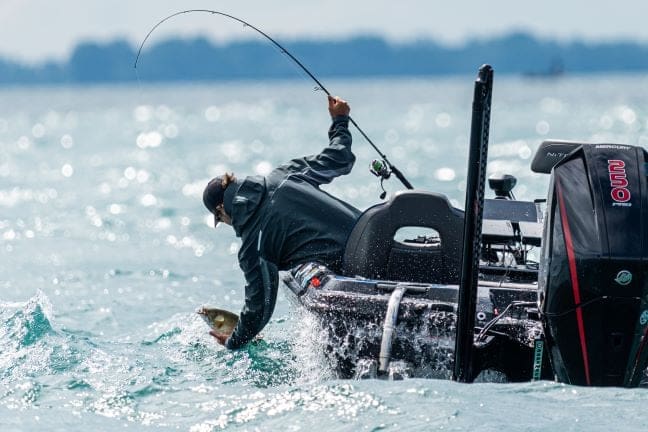Given a choice to fish in the rain or stay home, most anglers will opt to stay home. Generally, anglers do not like fishing in the rain. Can you blame them? It’s uncomfortable, sometimes cold, and not the best of conditions. Or is it? A bass doesn’t care. They’re not getting any wetter! And a good soaking rain can trigger largemouth bass, and smallmouths to a lesser extent, to a heightened level of activity that results in great fishing. So, you’d better suck it up buttercup, break out the Whitewater rain gear and assume a mindset to take advantage of it.
“I don’t think that rain is as good for smallmouths as it is for largemouths,” stated accomplished tournament pro and bass aficionado Jay Przekurat. “Fronts, clouds, wind, and rain are good for largemouths. It makes it tougher for them to see you, they are more at ease and more aggressive when it’s overcast and dark and they’re more prone to venture farther from cover.”
“Smallmouths on the other hand are sight driven and hunt in packs. They rely largely on their eyesight. Sunny days are far and away the best days to fish for smallmouths, at least on the Great Lakes and large inland lakes. Those dark, overcast, and rainy days are when you want to target largemouths,” advised Przekurat.
“Both species are bass, but they’re really polar opposites,” observed Przekurat. “One hunts and the other waits in ambush. The waters where smallmouths thrive are clear, cool and never get too warm. With largemouths, they might be in stained, shallow water that gets 80 degrees or more, so a cool rain or mid-summer thunderstorm jumpstarts their metabolism. They can feel when an approaching front is moving in, they move out from cover and may even start hunting like a smallmouth.”
Regardless of the time of year, a steady, soaking rain or thunderstorm typically positively affects bass. Besides the falling barometer, the influx of freshwater invigorates bass, especially largemouths. Reservoirs that have been at extremely low levels suddenly get a surge of water after a storm and the freshwater coming in from feeder creeks, headwaters, tributaries, and culverts rings the dinner bell for bass. Incoming water has nutrients and microorganisms in it that attract minnows, and baitfish, and bring crayfish out of hiding.
The scenario is like a siren’s song for bass. Bass will search out the source of the water and take advantage of the abundant forage attracted to it. It might last for just a few hours or a few days, but the result is a bunch of bass confined to relatively small areas that have the feedbag on. It takes a lot of the guesswork out of bass fishing with regard to location.
The rain or storms that may positively influence the fishing may not take place where you’re actually fishing. A spring soaker or summer deluge may take place miles upstream from the body of water you’re on, but eventually, it will affect your fishing. Keep an eye on the weather map for storms that might contact the immediate area, but also be aware of the trickle-down effect and water that might take a couple of days to reach the reservoir and influence fish activity.
Regardless of the time of year, the influx of water can be positive. In the spring, when the main lake is still cold, run-off from storms will likely provide water that is warmer than the main body of water. In the summer, it’s likely to be just the opposite. The run-off will likely be cooler than the main lake and the increase in current and change in temperature will draw baitfish and bass to the source.
Smallmouths and their tendency to frequent larger, deep bodies of water are less prone to any changes in water temperature caused by local rain showers, but largemouths are different. Anglers are well aware that instead of largemouths going deeper in the summer they often remain shallow taking cover under a mat of weeds or lily pads that provide shade, cooler temperatures, and a smorgasbord of aquatic and terrestrial forage.
A good rain shower affects largemouths in the skinny water more than any other bass. The downpour will cool the water, provide more oxygen, and invigorate and spur the bass to go on a feeding frenzy. Put on the Whitewater rain gear and make sure you’re on the water during a steady rain as long as there’s no lightning involved. Even better is the fact that the jet skiers and other water zealots will be taking shelter.
Rain is often associated with wind, which can help orientate bass and make fishing even better. Wind will push baitfish, panfish, and terrestrial insects and creatures into vegetated shorelines. Bass will be waiting. The chop will also make the bass feel more secure and reward a stealthy approach.
Ideally, you don’t get a deluge, but just a good rain maybe ¼ to a 1/2 inch that begins to bring water levels up and starts to color up the water. Reservoirs that have been at extremely low levels will slowly begin to rise and fishing opportunities will rise with it. Fishing will improve before, as bass sense the pending storm, during as water levels begin to rise, and after when the influx of water influences bass location.
Lure selection depends largely on how much rain falls and the resulting water clarity. If the incoming water is extremely dirty, opt for a spinnerbait. Spinnerbaits can be fished from top to bottom, they put out a lot of vibration that fish can easily locate it in dingy water, and they do a good job of imitating baitfish. Experiment with blade configuration and skirt colors until you hit on the right combination. The right combination might be more about visibility and vibration than anything else.
If the water remains clear, you have a lot more options. Topwater lures can be gangbusters if the water remains clear and the bass are concentrated. Jerkbaits, crankbaits, jigs, and tubes will work equally well. The key is to identify the most prevalent forage and pick the appropriate lure and presentation.
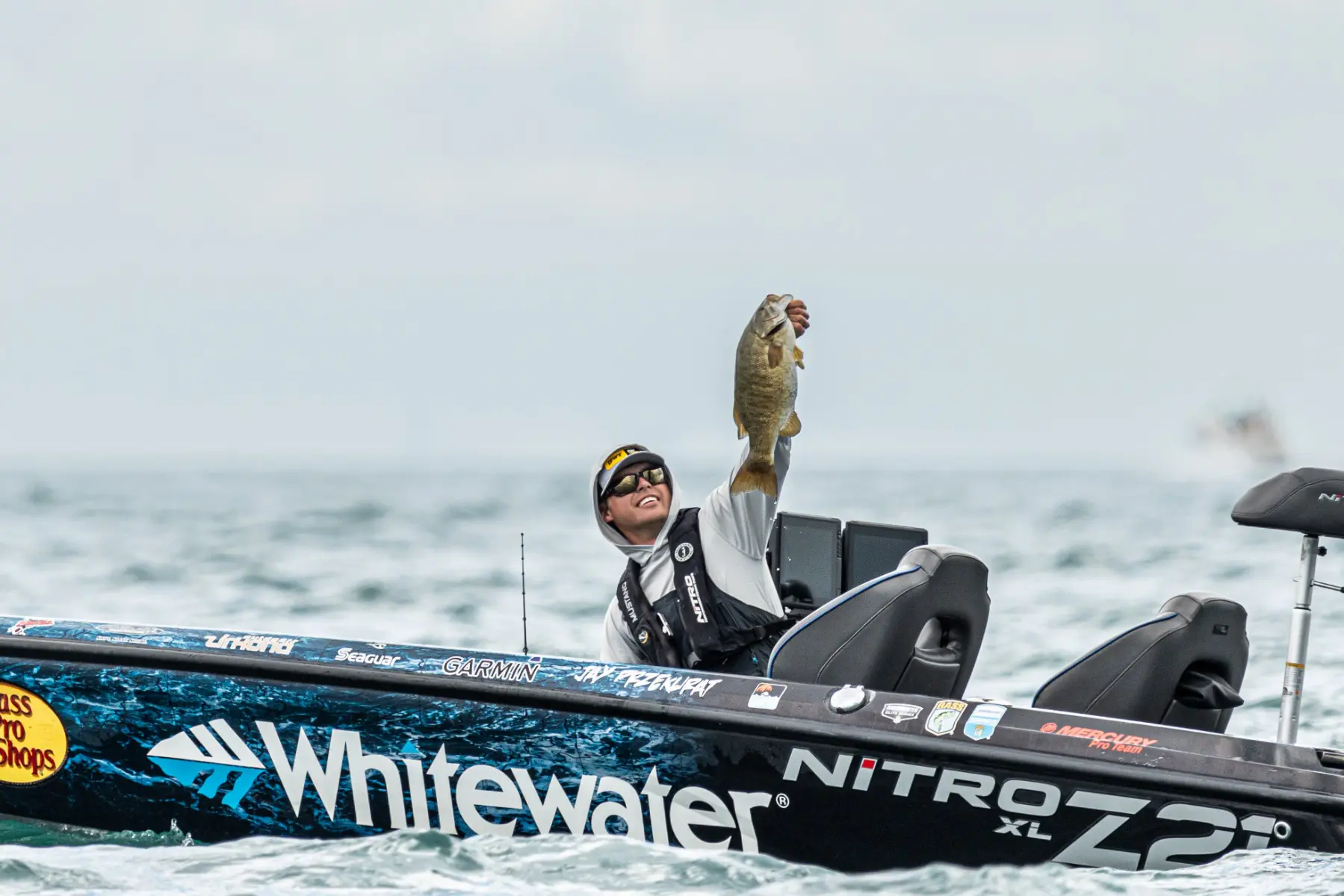
Bass anglers spend plenty of money on their favorite hobby. One place they don’t want to skimp is on a good rain suit. “I can’t begin to tell you how many tournaments I’ve fished that I would not have been able to compete in if it weren’t for my Whitewater Great Lakes Pro rain suit,” Przekurat said. “It would have been impossible to deal with the conditions and remain focused and positive without the Whitewater Pro rain suit. It kept me from getting cold and wet and not concentrating on what my mission was. The weather was the last thing on my mind.”
The Great Lakes Pro Jacket is meticulously crafted to deliver top-notch performance for professional anglers and everyday fishing enthusiasts. The new pro design is an improvement over the original Great Lakes Jacket design by introducing a sleek and avant-garde aesthetic, transforming it from a two-layer to an advanced three-layer poly/spandex shell construction for enhanced stretch, quality and durability.
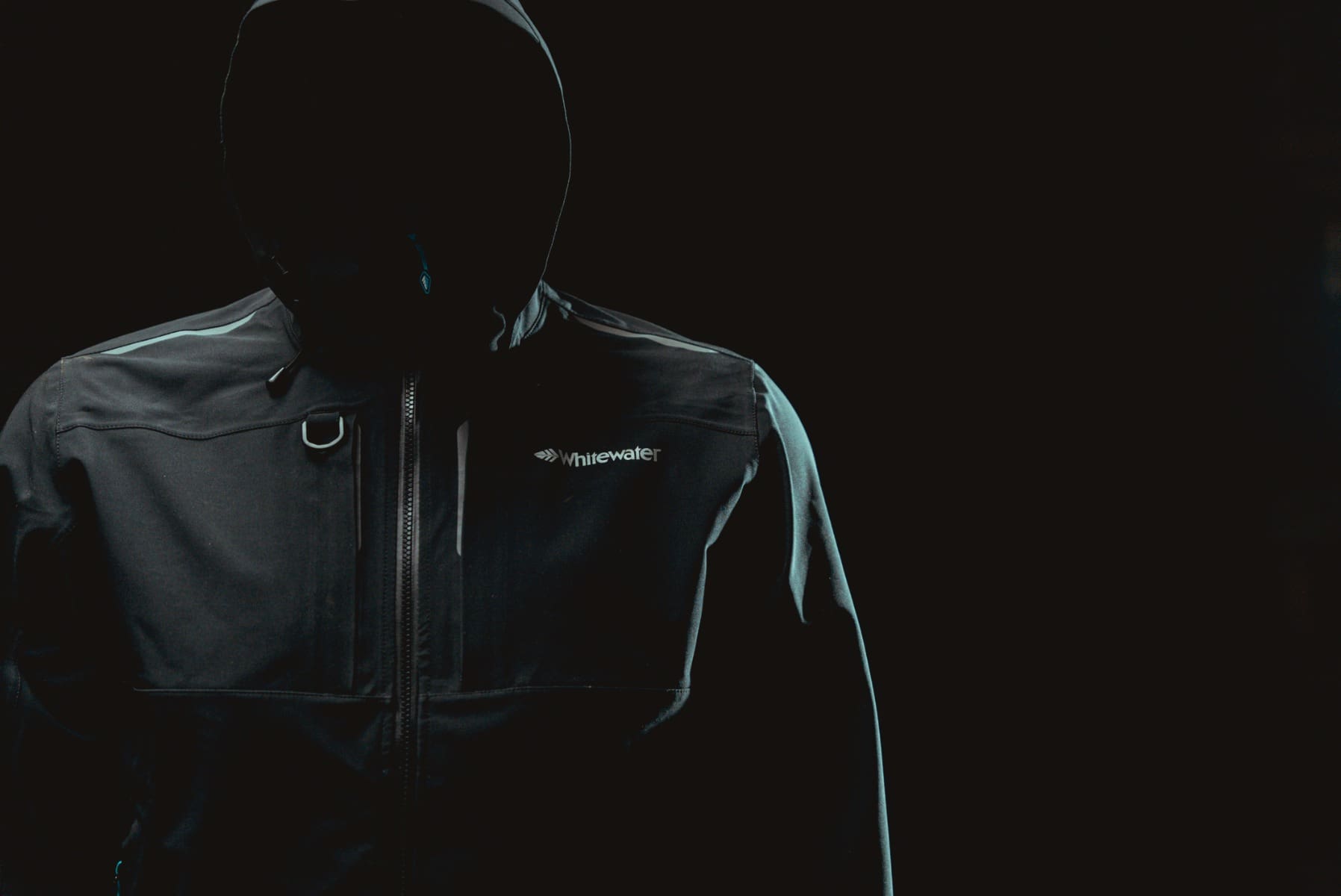
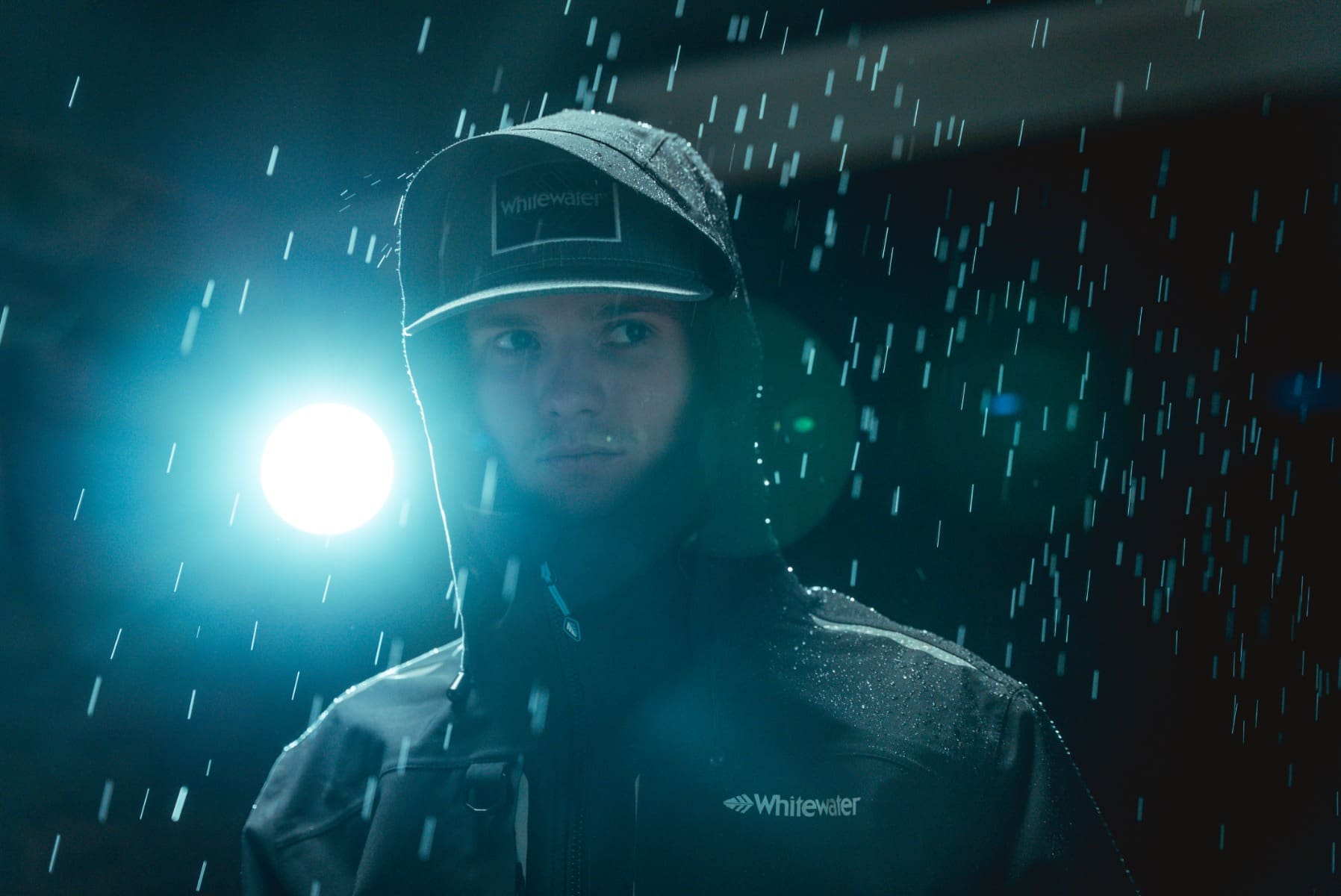
This tough three-layer design features a waterproof, windproof, breathable shell that is 100% seam-sealed and boasts 30,000MM hydrostatic resistance in addition to a durable water-repellent treatment. With a waterproof and windproof laminate combined with taped seams, the garment is rendered impenetrable and ready to take stormy conditions head-on. The three-piece hood, equipped with multiple adjustment points, an extended collar design, and hook and loop cuff adjustments seal out moisture. Strategically placed reflective tape ensures visibility in low-visibility weather conditions. Additionally, two heavy-duty D-rings are tactically positioned for attaching your safety kill switch cord and trolling motor fob. The jacket includes two low-profile waist and two covered chest storage pockets, offering convenient storage for items ranging from extra gloves to sunglasses.
Water-resistant external zippers, full elastic shoulder straps with silicone treatment on the underside to prevent slipping, cam buckles, and an adjustable waist cinch system on the Great Lakes Pro rain bibs allow you to batten down the hatches and withstand the worst Mother Nature can throw at you.
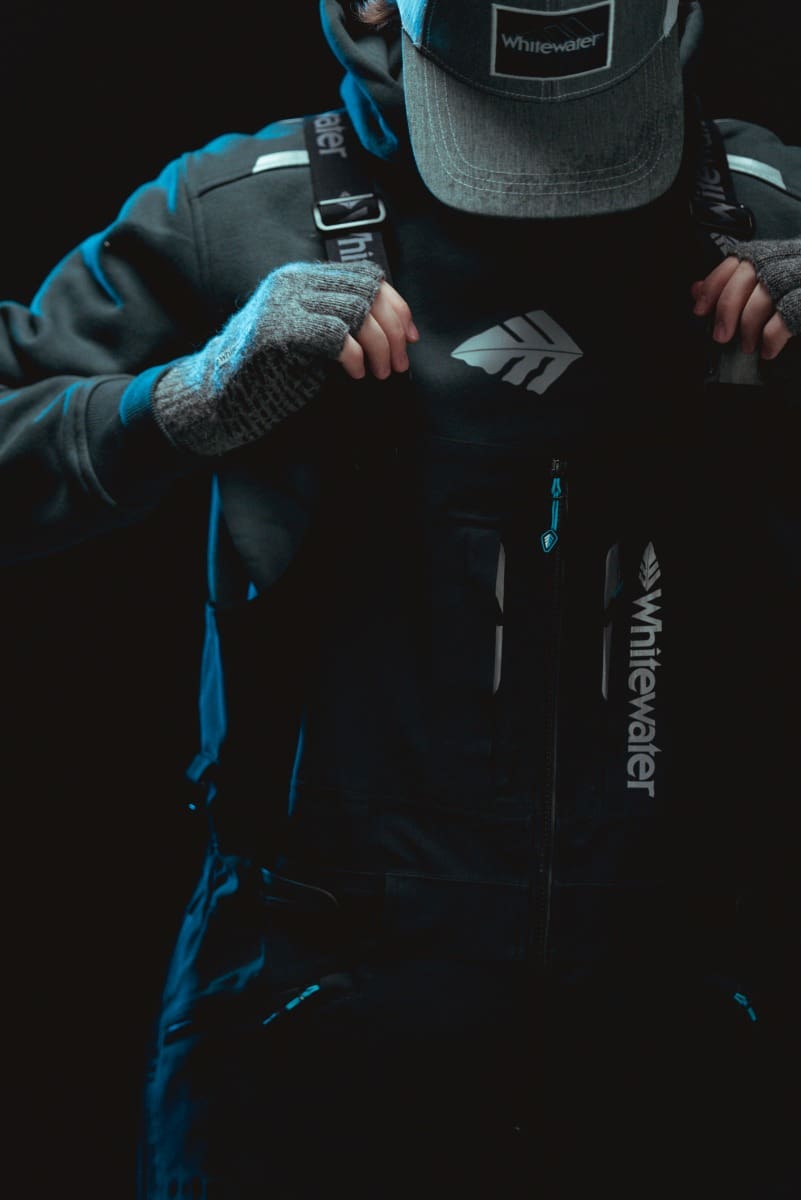
Additional features of the Whitewater Great Lakes Pro rain bibs include gusseted front zippers that provide superior waterproof protection, low profile cargo pockets with waterproof closures, ergonomic, articulated knees, and rugged 500-denier nylon. Adjustable pant cuffs with 500-denier lining and cuff-to-thigh full-length leg zippers make the bibs easy to get on and off even with cold fingers.
The Whitewater Pro rain suit represents a sizeable investment, but you’ll enjoy the benefits over and over and it will last a lifetime.
Another piece of equipment that Przekurat recommends for fishing in the rain may not be so obvious. “Believe it or not, but sunglasses can be really important for fishing in the rain,” Przekurat said. “I don’t go on the water without amber, yellow, and gray lenses for my glasses. It’s amazing how much better you can see on dark, overcast rainy days with yellow lenses.”
“It’s not 100% of the time, but there just seem to be days when the yellow lenses will help you spot weed lines and holes in the weeds that you just can not see with other lenses. I don’t know if it’s the angle of the sun or what, and it’s not all year round and not every day, but on certain days it makes a huge difference,” said Przekurat.

Many people think a dark, dreary rainy day is perfect for curling up on the sofa with a good book. Savvy anglers know that it’s an even better day to be on the water because they know when it rains, it pours.
